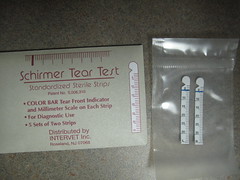in
Mini Topics,
eye tests in dogs,
schirmer tear test,
glaucoma in dogs,
tonometry,
fluorescein stain
1 Comment
About Lori Hehn
Lori Hehn is a practicing veterinarian and a contributor and content manager with XPrep Learning Solutions. She has a drive for continual learning and enjoys interacting with veterinary and vet tech students. She also writes veterinary learning books for children.







